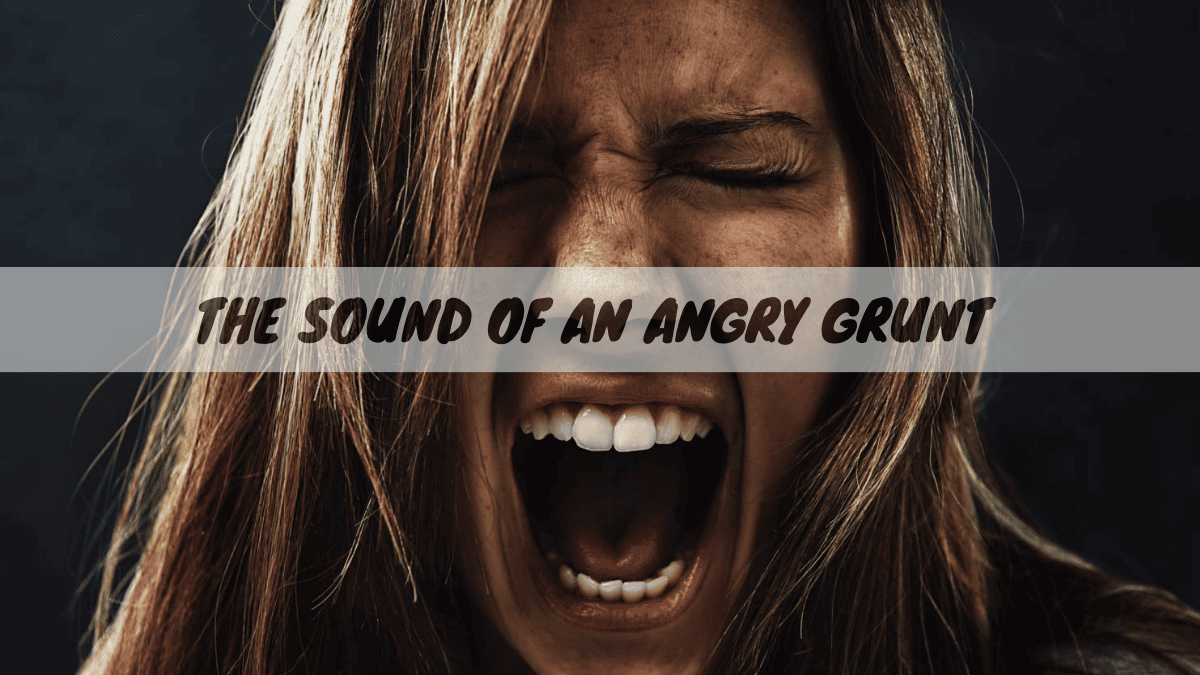The Sound of an Angry Grunt NYT – A Deep Dive into Human Expression
Introduction
The grunt, among the myriad of human vocalizations, emerges as a profoundly primal and impactful expression. Recently spotlighted by The New York Times, this often underestimated utterance reveals layers of meaning, exploring its diverse forms, psychological roots, and physiological effects. It serves as a powerful tool of communication, tapping into ancient instincts and conveying a range of emotions and intentions with remarkable clarity and immediacy.
This article aims to provide an in-depth analysis of the “sound of an angry grunt,” exploring its origins, implications, and the various contexts in which it appears.
Understanding the Angry Grunt
Definition and Characteristics
A grunt is a short, guttural sound made by the vocal cords. An angry grunt, specifically, is often louder, sharper, and more forceful than other types of grunts. It serves as an immediate and instinctive expression of frustration, anger, or discomfort.
Key Characteristics:
- Duration: Typically short, lasting less than a second.
- Intensity: High; often involves a sudden expulsion of air.
- Tone: Harsh and low-pitched.
Historical Context
The grunt has roots in our evolutionary history. Early humans likely used such sounds as a basic form of communication, especially in moments of conflict or danger. This primal expression has persisted throughout human evolution, retaining its raw, visceral impact.
The Psychology Behind the Grunt
Emotional Triggers
Anger is a primary emotion that can trigger a grunt. Situations that evoke frustration, injustice, or physical discomfort often lead to this response. The angry grunt is an outward manifestation of inner turmoil.
Common Triggers:
- Frustration: Encountering obstacles or repeated failures.
- Pain: Sudden, unexpected physical discomfort.
- Aggression: Confrontations or threats from others.
Physiological Responses
When a person grunts in anger, several physiological changes occur:
- Increased Heart Rate: The body prepares for a fight-or-flight response.
- Muscle Tension: Muscles, especially in the jaw and throat, tighten.
- Adrenaline Surge: The hormone adrenaline is released, heightening alertness and energy levels.
The Social and Cultural Dimensions
Cultural Variations
Different cultures interpret and respond to grunts in varied ways. In some societies, an angry grunt may be a common, accepted expression of discontent, while in others, it might be seen as impolite or aggressive.
Examples:
- Western Cultures: Often associated with assertiveness or dominance.
- Eastern Cultures: May be viewed as a loss of face or control.
Social Interpretations
In social contexts, the angry grunt can convey a range of messages, from mild irritation to intense anger. Understanding the nuances of these sounds can help in interpreting the underlying emotions and intentions of the person grunting.
The Science of Sound: Acoustic Properties of Grunts
Frequency and Pitch
Angry grunts are typically low-pitched and involve a rapid vibration of the vocal cords. The frequency of these sounds can vary, but they generally fall within the lower end of the human vocal range.
Key Factors:
- Vocal Cord Tension: Increased tension leads to higher frequency sounds.
- Air Pressure: Greater pressure results in louder, more forceful grunts.
Sound Patterns
Analyzing the sound patterns of grunts can reveal much about their origin and intent. Spectrograms, which visually represent sound frequencies over time, show that angry grunts have distinct, sharp spikes corresponding to their abrupt nature.
The Angry Grunt in Popular Culture
Movies and TV Shows
The angry grunt is a staple in visual media, often used to convey a character’s frustration or anger without the need for dialogue. This primal sound can be more impactful than words in certain scenes.
Notable Examples:
- Hulk (Marvel Movies): The character’s grunts and roars are synonymous with his anger.
- Darth Vader (Star Wars): His deep, mechanical breaths often segue into grunts of frustration.
Literature and Art
In literature, the angry grunt is often described to add depth to characters and their emotional states. Artists might use this sound as a motif in their work to symbolize raw, unfiltered emotion.
Case Studies and Real-life Examples
Personal Anecdotes
Many people have personal stories involving angry grunts, whether from themselves or others. These anecdotes highlight the universality and immediacy of this form of expression.
Example:
- A Father’s Frustration: A father grunts angrily when struggling to assemble a child’s toy, expressing his mounting frustration.
Public Figures and Angry Grunts
Public figures, including politicians and athletes, have been known to grunt in anger, often in high-stress situations. These instances are frequently captured by the media, offering a glimpse into their unguarded moments.
Example:
- Sports: Athletes like tennis players often grunt in frustration after a missed shot or bad call.
Frequently Asked Questions
1. Why do people grunt when they are angry?
Grunting is a primal response that helps to release tension and express emotions non-verbally.
2. Are angry grunts unique to humans?
No, many animals also grunt when angry, indicating that this form of expression is deeply rooted in our evolutionary history.
3. Can an angry grunt be a sign of deeper issues?
Yes, frequent angry grunts can indicate underlying stress, frustration, or even anger management issues.
Conclusion
The sound of an angry grunt is more than just a simple noise; it is a complex, multifaceted form of human expression. Understanding its origins, variations, and implications can provide deeper insights into human behavior and communication. By delving into the intricacies of the angry grunt, we can appreciate this primal expression for its raw emotional power and its role in our daily lives.







